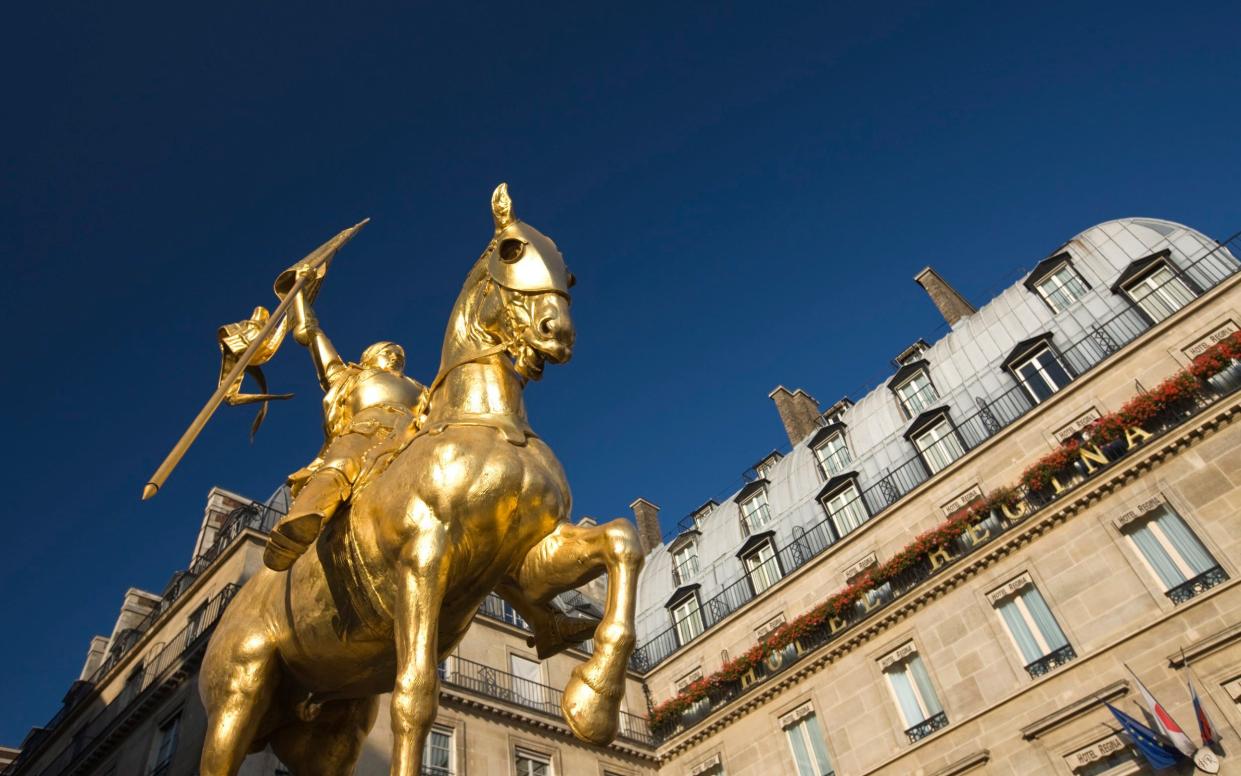Claiming historical figures for the trans cause is even more sinister than you think

- Oops!Something went wrong.Please try again later.
- Oops!Something went wrong.Please try again later.
We have become horribly inconsistent in the way we interpret history. At the same time as critics are poring over Ridley Scott’s new Napoleon blockbuster for the merest hint of historical inaccuracy, a museum in Hitchin has imposed a modern ideology upon a coin from ancient Rome, suggesting that the male emperor on its face “most definitely preferred the ‘she’ pronoun” and was, in fact, transgender.
Elagabalus, who ruled from AD 218 until his assassination four years later, is now to be hailed as a trailblazer. Not only did he wear make-up and women’s clothes, but he “married” a man, insisted upon being called a woman, and requested a procedure that would result in his having a vagina. That is, if his ancient historians are to be believed.
The boy-emperor was just 14 when he came to the throne. His family hailed from Emesa – modern Homs in Syria – and raised what was, by most accounts, an immature and cruel son. It was said that Elagabalus served his dinner guests wax disguised as real food and literally drowned some of them in rose petals released from a false ceiling.
He had little regard for the authority of the senate, and put several of its members to death without trial.
It just so happened that one of the chief contemporary chroniclers of his life was a senator.
Cassius Dio, the historian responsible for the anecdotes on Elagabalus’ alleged sex-change, had an obvious axe to grind. Presenting a man as effeminate and sexually passive was a well-established method of insulting him in public. Men from the east had long been prey to such accusations. The real Elagabalus may well have had a fondness for fabrics and rouge, but Cassius Dio gave away his bias by consistently calling him “Sardanapalus” after a legendarily womanish Assyrian king, rendering his account all the more suspicious.
Dio claimed that Elagabalus “married” an adolescent male charioteer, and sought the affections of a man from modern Turkey named Aurelius Zoticus, who reportedly had the biggest penis anyone had ever seen. It was supposedly Zoticus who called Elagabalus a lady, though this arrangement was surely short-lived, for the charioteer had his rival poisoned so that he was unable to perform his conjugal duties. Zoticus was soon cast out.
These stories, which ought to be taken with a sizeable pinch of salt, had precedent in antiquity. Emperor Nero allegedly had a boy transformed into a woman so as to resemble his late wife. While it’s certainly possible that Elagabalus requested a similar sex-change for himself, it is equally possible that Cassius Dio made it up or conflated events, for he also reported that the emperor circumcised himself and others as an act of ritual to his god.
Elagabal, a Syrian sun god, stood far apart from the traditional Roman pantheon. He was worshipped in the form of a black stone and honoured with orgiastic rites. Intriguingly, another eastern deity, the Mother Goddess Cybele, was also worshipped by the Romans as a black stone or meteorite, and honoured by eunuchs. The Veronese poet Catullus described one of Cybele’s male acolytes chopping off his genitals to become a “she”.
Changing one’s genitals, in other words, was associated with eastern religion rather than purely self-identity.
There was indeed no real understanding of the concept of “transgender” in this period, though many ancient myths describe the transformation of people through sex, including the nymph Salmacis and her lover Hermaphroditus.
The rationale for identifying Elagabalus as explicitly trans – on shaky evidence – is clear enough. The North Hertfordshire Museum presumably hopes to show that questions of gender identity are not new. But the move risks blurring out the people of history who definitively defined themselves as, say, gay or bisexual, by contributing to the growing popular suspicion that history is being rewritten before our very eyes. If people who were more obviously homosexual are labelled as “trans”, then they are effectively erased from gay or lesbian history.
Such claims risk normalising the more extreme wing of the trans movement. Attempts are made to justify them on the grounds that their roots are in history. Last year, an academic argued Elizabeth I may have been non-binary, despite the monarch famously describing herself as a “weak and feeble woman” with the “heart of a king”. A Globe Theatre portrayal of Joan of Arc as non-binary was recently labelled “insulting and damaging” by women’s rights campaigners.
When the truth cannot be established firmly either way owing to the inadequacy or bias of the sources, it is surely safer to err on the side of caution by laying out the evidence and allowing people to decide for themselves. To debate Elagabalus’ identity, to weigh up the problems of the sources, engages us in history. Being fed a line that may or may not be true alienates us from it. Elagabalus, whoever he was, deserves to be considered in the round.
Daisy Dunn is the author of Not Far From Brideshead: Oxford Between the Wars

